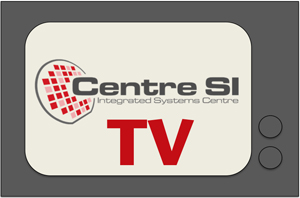Go to
January 9, 2009
Compressed sampling: toward new ways of going from A to D
Pierre Vandergheynst, Signal Processing Laboratory (LTS2), Swiss Federal Institute of Technology, Lausanne
Abstract: Recently there has been a lot of buzz in the applied maths and signal processing communities about a new theory called Compressed Sensing or Compressive Sampling (CS). The central result of CS asserts that a large class of signals can be sampled far below the Shannon-Nyquist rate with simple linear strategies that could be efficiently implemented in hardware. This would mean new ways to perform A/D conversion and, in a larger scope, new ways to manipulate signals with a new emphasis on analog processing.
In this talk, I will review the CS theory, describing which signals can be sampled efficiently and why, intuitively, the theory holds. I will also describe the family of new algorithms needed to implement CS and will review some recent applications.
About the speaker: Dr. Pierre Vandergheynst received the M.S. degree in physics and the Ph.D. degree in mathematical physics from the Université catholique de Louvain, Louvain-la-Neuve, Belgium, in 1995 and 1998, respectively. From 1998 to 2001, he was a Postdoctoral Researcher with the Signal Processing Laboratory, Swiss Federal Institute of Technology (EPFL), Lausanne, Switzerland. He was Assistant Professor at EPFL (2002-2007), where he is now an Associate Professor. His research focuses on harmonic analysis, sparse approximations and mathematical image processing with applications to higher dimensional, complex data processing. He was co-Editor-in-Chief of Signal Processing (2002-2006) and is Associate Editor of the IEEE Transactions on Signal Processing (2007-present). He has been on the Technical Committee of various conferences and was Co-General Chairman of the EUSIPCO 2008 conference. Pierre Vandergheynst is the author or co-author of more than 50 journal papers, one monograph and several book chapters. He is a senior member of the IEEE, a laureate of the Apple ARTS award and holds seven patents.
Secondary navigation
- January 29, 2018
- August 30, 2017
- Past seminars
- 2016 - 2017 Seminars
- 2015 - 2016 Seminars
- 2014 - 2015 Seminars
- 2013 - 2014 Seminars
- 2012 - 2013 Seminars
- 2011 - 2012 Seminars
- 2010 - 2011 Seminars
- 2009 - 2010 Seminars
- 2008 - 2009 Seminars
- 2007 - 2008 Seminars
- 2006 - 2007 Seminars
- August 31, 2007
- June 29, 2007
- June 20, 2007
- June 5, 2007
- May 30, 2007
- May 16, 2007
- May 15, 2007
- April 24, 2007
- March 27, 2007
- March 14, 2007
- February 9, 2007
- February 8, 2007
- January 12, 2007
- December 5, 2006
- November 14, 2006
- October 31, 2006
- October 27, 2006
- October 26, 2006
- October 20, 2006
- September 20, 2006
- September 20, 2006
- September 20, 2006
- September 19, 2006
- 2005 - 2006 Seminars
- August 23, 2006
- August 22, 2006
- June 26, 2006
- June 20, 2006
- June 16, 2006
- June 7, 2006
- June 6, 2006
- May 30, 2006
- May 17, 2006
- May 10, 2006
- April 27, 2006
- April 12, 2006
- March 31, 2006
- March 29, 2006
- March 22, 2006
- March 15, 2006
- February 27, 2006
- February 8, 2006
- January 25, 2006
- January 19, 2006
- January 18, 2006
- January 17, 2006
- January 11, 2006
- November 30, 2005
- November 23, 2005
- November 2, 2005
- October 26, 2005
- October 25, 2005
- October 5, 2005
- September 28, 2005
- 2005 Seminars

